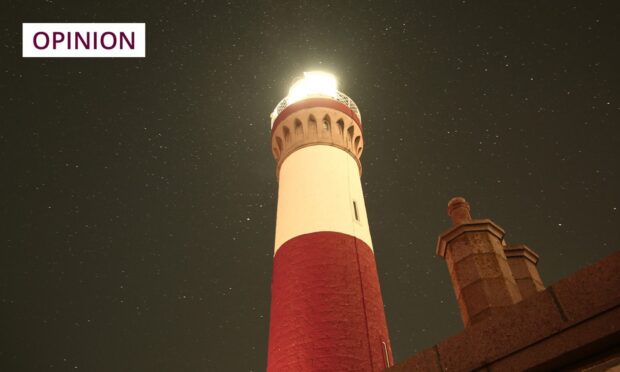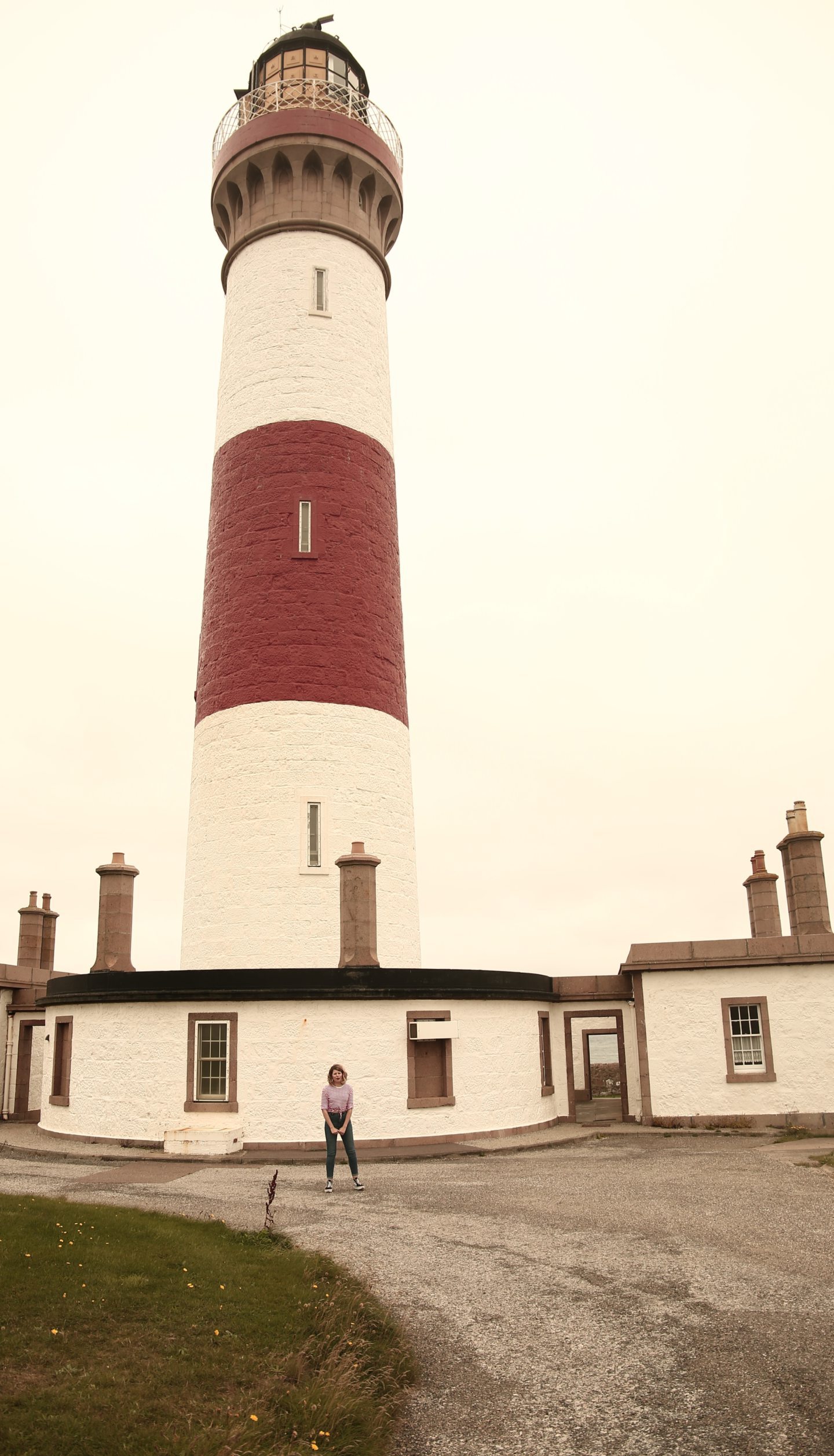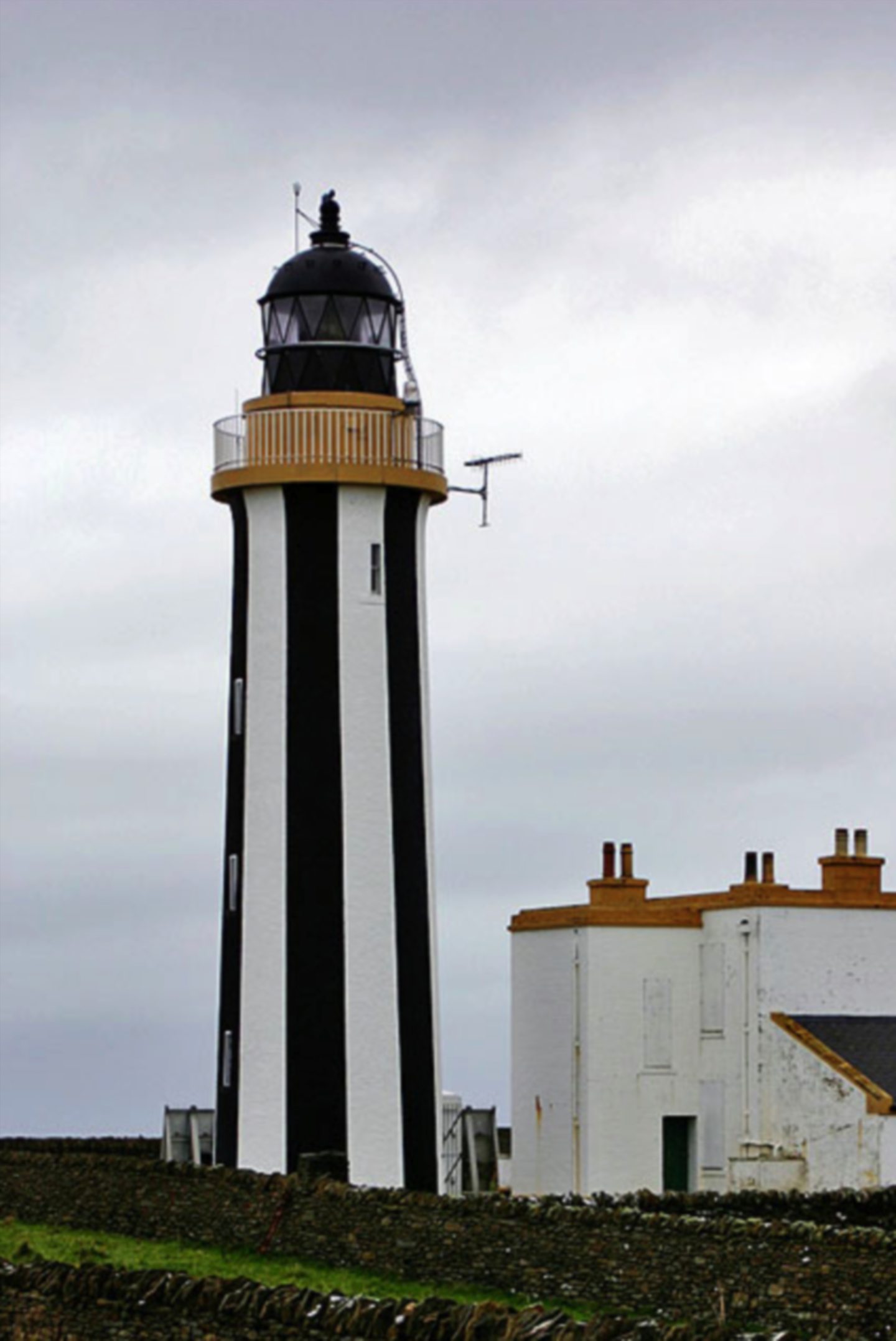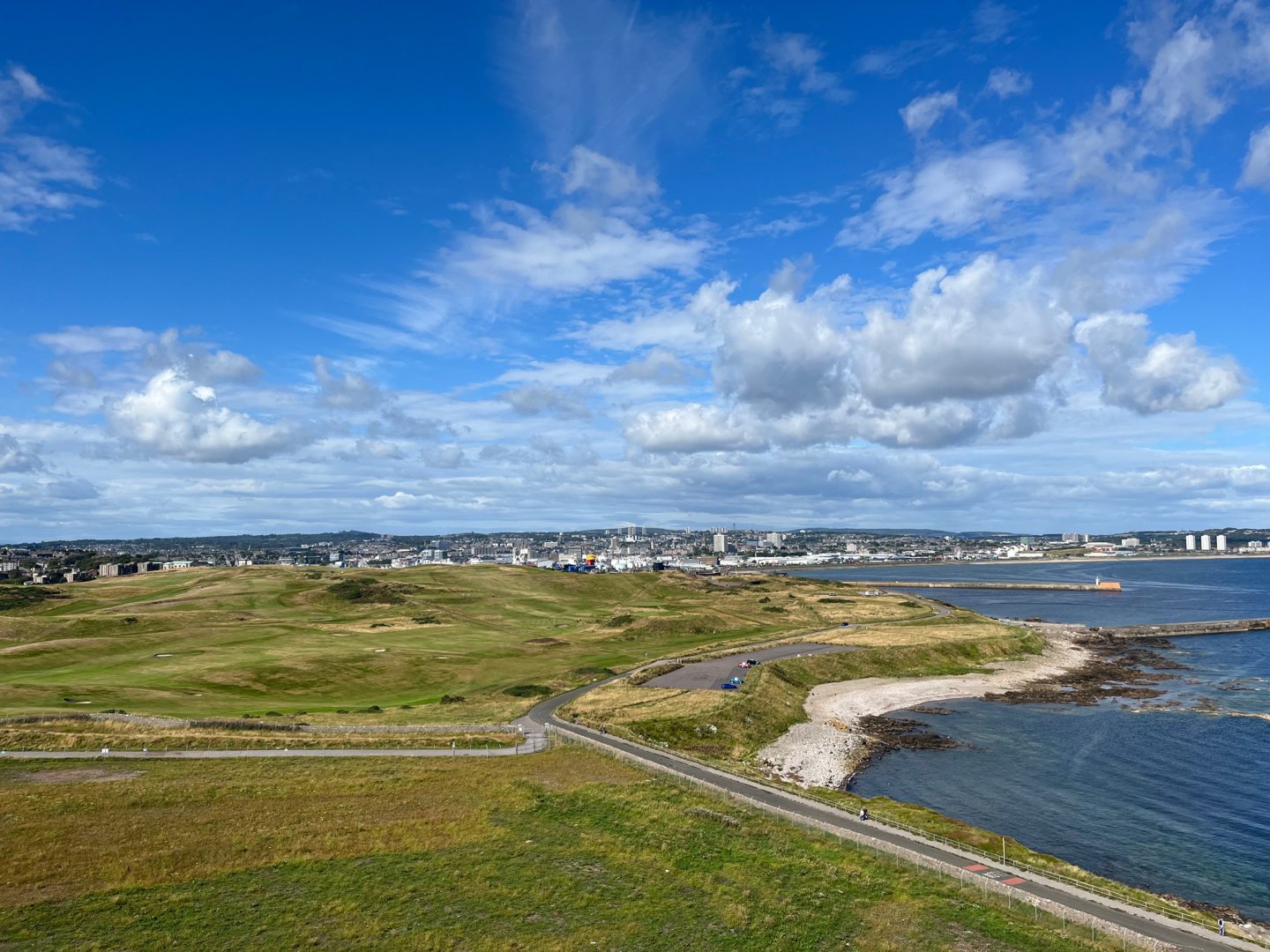I think almost everybody I know takes a photo and sends it to me when they spot a lighthouse. “Saw this and thought of you,” they write.
As I type this, I can see two lighthouses – tiny ones, sitting on my desk. The first is inside a miniature snow globe, the second is on an enamel pin badge. Both were recent birthday presents from two different, lovely friends.
Other thoughtful gifts this year included a lighthouse-themed teapot from my parents and a year’s membership to the Association of Lighthouse Keepers from my sister and brother-in-law.
Safe to say, I love lighthouses and my nearest and dearest got the memo.
If your next question starts with “why”, I don’t have a satisfying answer. I didn’t grow up in a cottage by the sea. There were no lighthouse keepers or sailors or fishermen in my family. I learned to swim and even sailed a little dinghy on the safety of a loch, but I was always wary of water; conscious of the powerful, terrible things it was capable of.
Given that trepidation, maybe my affection for structures designed to keep ships and people safe from harm on the open sea makes sense. But I’m by no means the only one who feels an affinity with them.
“I don’t know many people that don’t like lighthouses,” Craig Pake from the Northern Lighthouse Board told me a few months ago, when I spoke to him for a feature I’ve been working on. He’s been a staff member there for 25 years, and smiles fondly when he talks about Muckle Flugga in Shetland or Bell Rock off the coast of Angus, like he’s telling me about his kids.
I don’t know many people who don’t like lighthouses either. What’s not to like about them? They’re striking, quirky and always surrounded by beautiful coastal scenery. They’re also doing a vital job, and have been for hundreds of years: warning mariners about dangerous rocks and preventing devastating shipwrecks.
We’ve romanticised lighthouses well beyond their practical purpose. But how could we resist? Thanks to our perilous, rocky coastlines, there are more than 200 still operating in Scotland, each one slightly different to the last, and many completely unique in verging-on-bonkers ways.
Some look like wee castles with domes perched on top – Brough of Birsay off the north-west coast of Orkney, for example, or Isle of May in the Firth of Forth. A few (like Cloch, south-west of Gourock) look like otherwise normal homes with a lighthouse added, as though it has grown, tree-like, of its own accord through the existing houses.
Some are tiny, stocky affairs, while others are towering, tapered and elegant – Skerryvore, south-west of Tiree, is the tallest in the country, at 48 metres.
My favourites – Buchan Ness, Eilean Glas, Tarbat Ness – sport horizontal red and white stripes. (Though Start Point on the Orkney island of Sanday is painted in fetching vertical black and white stripes that rival the ones on Beetlejuice’s suit, and I’m a huge fan of its look, too.)
A couple of years ago, I was lucky enough to stay for a few days in one of the former keepers’ cottages at Buchan Ness, which is in the village of Boddam, Aberdeenshire, not far from Peterhead. The visit was a leaving gift from former colleagues who wanted me to be able to realise my dream of living in a lighthouse (or as close as you can easily come to doing that, anyway).
The cottage itself was lovely – spacious and cosy. Sitting next to the open fire in the living room, I could picture the various Lighthouse Board workers and their families who lived there for around 170 years before the light was automated doing the very same thing.
Could someone live in a lighthouse?
I do have a silly dream about living in a lighthouse; not in a keeper’s cottage – actually IN the lighthouse. I’ve thought before about how I could put a writing desk in the lantern room and enjoy stunning views while I worked during the day, before vacating the space at night to let the lamp do its important thing. I’ve wondered about the pros and cons of sleeping in a hammock long term, and if curved sofas exist.
My favourite memory of that trip to Buchan Ness is sitting outside the cottage, wrapped up warm, watching the lighthouse flash through the dark of a clear, star-filled night sky. I could hear the waves, but everything else was still and quiet. The experience was almost hypnotic; simultaneously moody and calm.
I think it’s the duality of the lighthouse that holds my interest; after more than 200 years, they’ve come to represent both solitary melancholy and unwavering hope. Churches and charities use lighthouses as symbols of faith and physical or emotional safety. I suppose, in my own non-religious way, I think of them in much the same way.
Recently, I was allowed to visit Girdle Ness in Aberdeen – my first time inside a lighthouse. I’m happy to report that there’s plenty of space in there for a writing desk and a curved sofa. And maybe even a real bed.
Alex Watson is Head of Comment for The Press and Journal, and an aspiring retained lightkeeper













